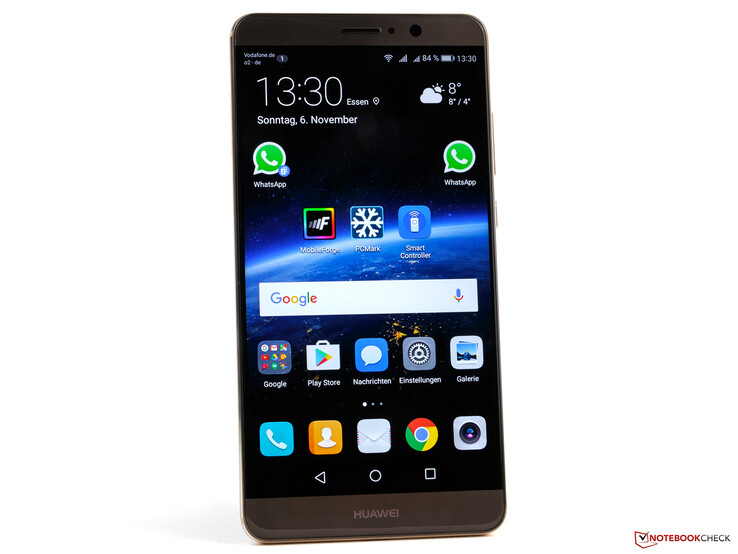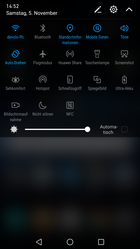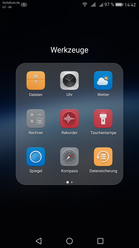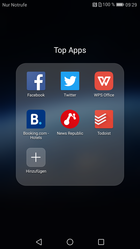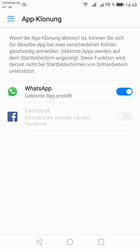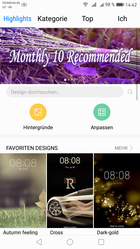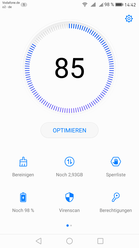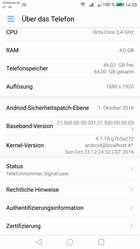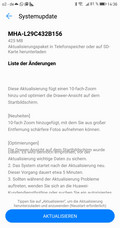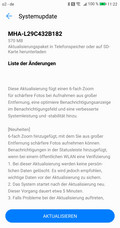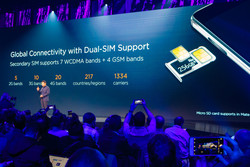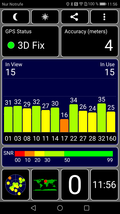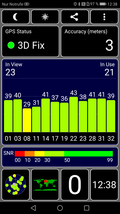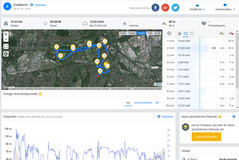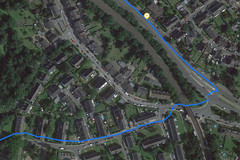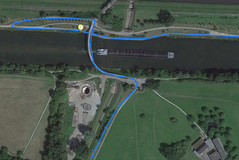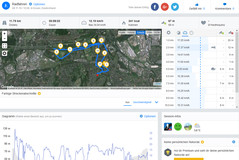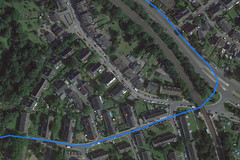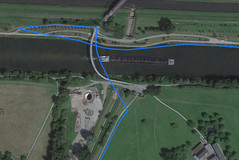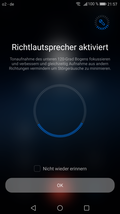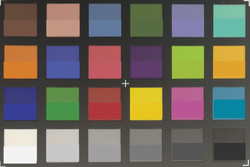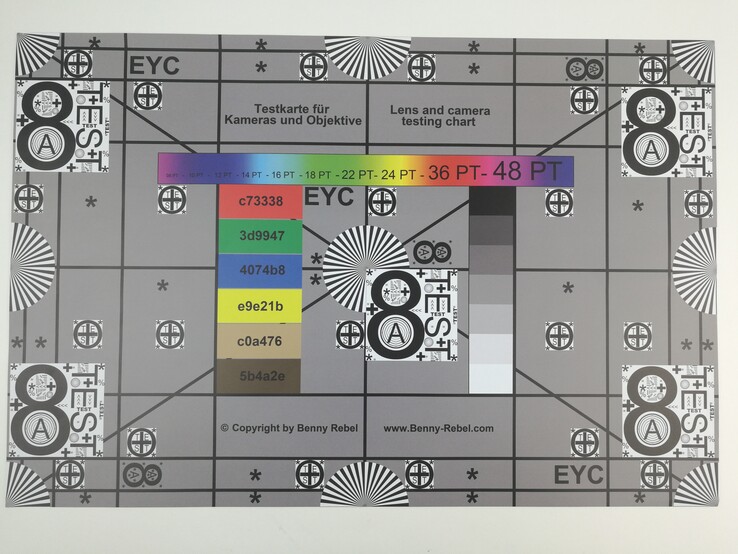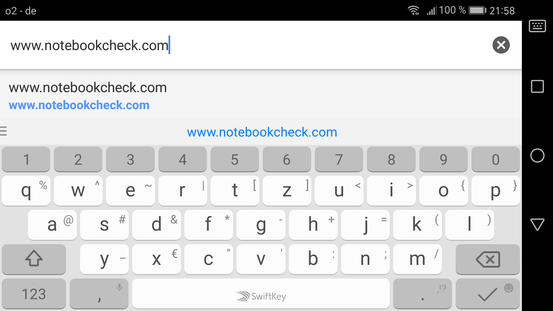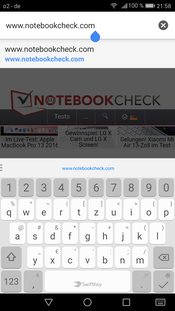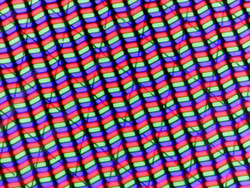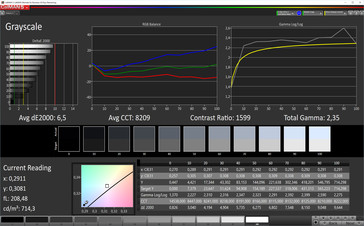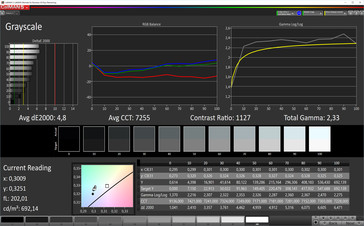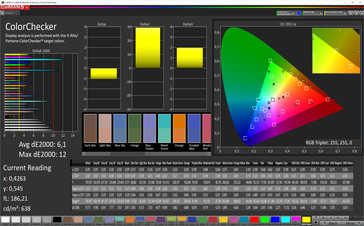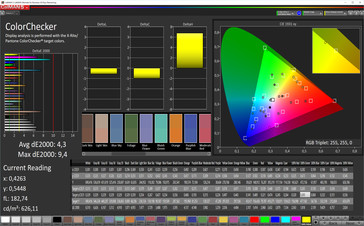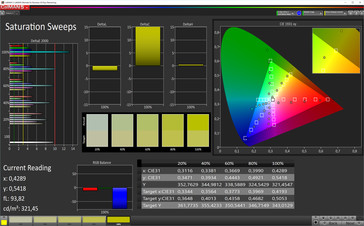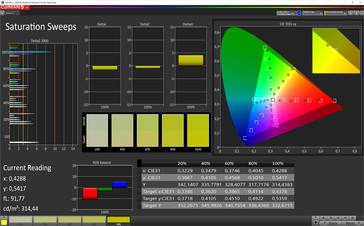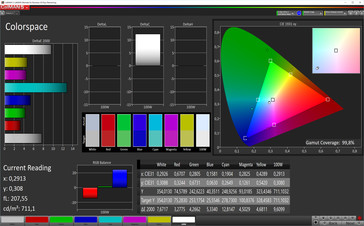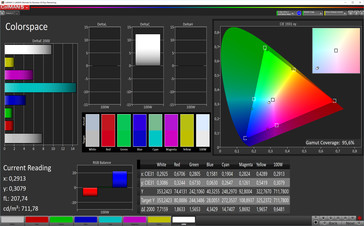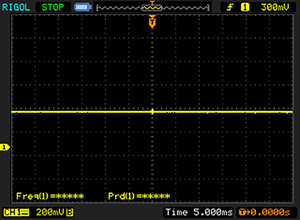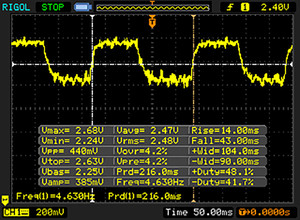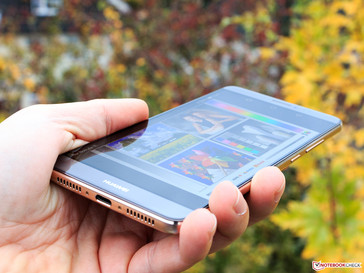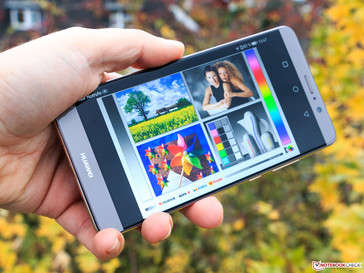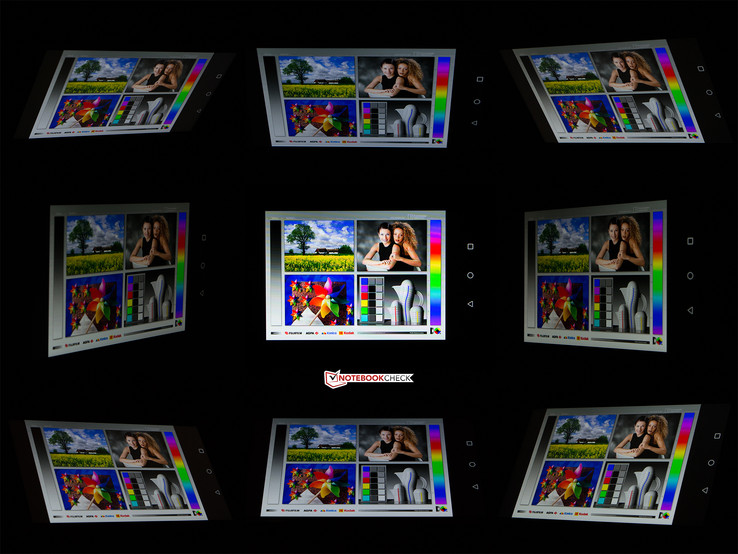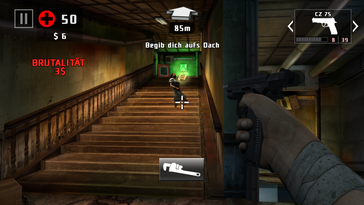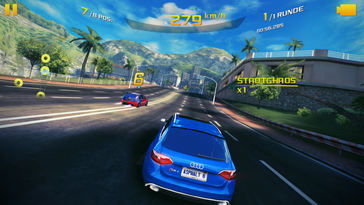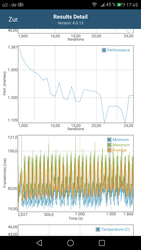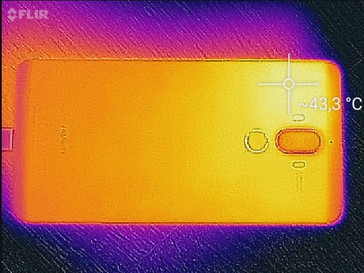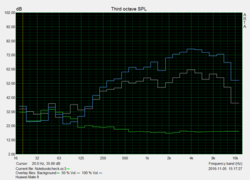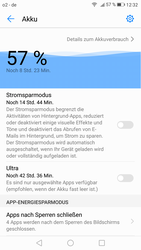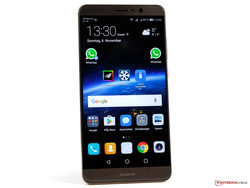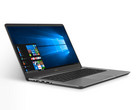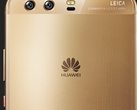Huawei Mate 9 Phablet Review
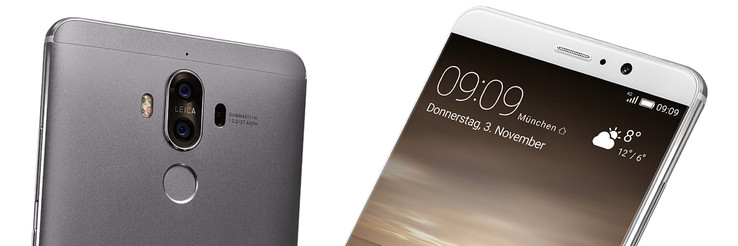
For the original German review, see here.
The Huawei Mate 9 is the direct successor to last year's Mate 8. The manufacturer advertises it with the slogan "A step ahead" and this is already confirmed by some points in the specification sheet. Huawei advertises the Kirin 960 as the fastest smartphone SoC for Android devices right now, and the Mate 9 is also one of the first devices that support LTE Cat.11 in practice. A new file system is also supposed to ensure a resource-friendly operation. The new UFS 2.1 flash storage promises new performance records, but the Mate 9 also includes more high-end specifications. The camera of the P9, which was developed in cooperation with Leica, has been further improved and now uses a 20 MP monochrome sensor. Huawei has also improved the quick-charge function, although the battery still has a generous capacity of 4000 mAh. Only the panel resolution is not high-end, but comparatively low at only 1080p.
The WQHD panel is reserved for the exclusive Porsche Design model. It is also slightly smaller at 5.5 inches and has rounded display edges. The fingerprint scanner is at the front and supports Smart Touch, which is already familiar from the Lenovo ZUK Z2, so the central home button can replace all three Android buttons by gesture controls. The memory equipment has been increased as well with 6 GB of RAM and 256 GB of flash storage (Mate 9: 4 GB of RAM and 64 GB of Flash), however, there is no microSD-slot and it is also much more expensive: Huawei charges 1395 Euros (~$1521) for the Porsche model. Initially, it will only be available in Porsche Design stores at the end of the year.
The regular Huawei Mate 9 is much more affordable at 699 Euros (~$762/RRP), but still 50 Euros ($55) more expensive than its predecessor. The main rival of the Mate 9 fell to pieces this year, because the Samsung Galaxy Note 7 was recalled after ongoing technical issues (we reported). This means that the Mate 9 is currently the only phablet larger than 5.5 inches with modern high-end components. Competitors such as the Galaxy S6 Edge+ or Lumia 950 XL are technically already outdated due to their age or were replaced by another model, such as the Nexus 6P. Therefore, we do not only use other phablets as comparison devices for this article, but also other modern high-end devices.
Information about the new firmware versions of the Huawei Mate 9 are available in the Updates section.
Case
The chassis frame of the Huawei Mate 9 and most of the rear are made of aluminum. Only the upper and lower parts of the rear are made of plastic to ensure antenna reception. The front is made of 2.5D glass. You can see that the device is from the Mate series. The chassis is less than 3 millimeters (~0.12 in) thick at the edges, so the large phablet actually leaves a pretty slim impression. Huawei lists a thickness of 7.9 millimeters (~0.3 mm); we measured 8 millimeters (~0.31 in). The camera protrudes by an additional 0.9 millimeters (~0.04 in). Despite the large screen and the powerful battery, the device stays pretty light at 192 grams (~6.8 oz).
The Mate 9 was announced in six different colors: Champagne Gold, Space Grey, Mocha Brown, Moonlight Silver, Ceramic White and Rosé Gold. Graphite Black is reserved for the Porsche Design model. Unfortunately, German customers can only choose between the Moonlight Silver and Space Grey models. Our test model is the Mocha Brown version.
The build quality of the Mate 9 is very good. The gaps are small and even, and the card slot is almost flush with the case. Its tray is also made of metal and can accommodate either two Nano-SIM cards or one SIM and one microSD-card. A single-SIM version is also available.
Pressure is not an issue for the phablet. Only a lot of force on the touchscreen will result in ripples on the IPS display. Twisting attempts are not successful either, and the Mate 9 does not produce any creaking sounds.
The battery is integrated and there is no special certification for dust or water protection. However, the internal components have the same nano coating against humidity, but it will not be sufficient to survive a shower.
Connectivity
Huawei's Mate 9 now also uses a USB Type-C port, but unfortunately it only supports the USB 2.0 standard. Fast data transfers are therefore not possible, and the port does not support wired video output either. Nevertheless, you can attach external storage and input devices thanks to the OTG functionality. Screen contents can be transmitted wirelessly via DLNA and Miracast.
According to Huawei, the microSD slot supports all modern memory card sizes, including 256 GB all the way up to 2 TB. Unfortunately, the microSD-card cannot be formatted as an internal storage, nor can apps be transferred to the card.
NFC and Bluetooth 4.2 are available as well. You also get an infrared transmitter, which is no longer standard, so the smartphone can be used as a remote for your home entertainment devices, air conditioning or trigger for cameras. An FM radio is not included.
The integrated notification LED can only be activated or deactivated, but not configured.
Software
Huawei ships the Mate 9 with Google's Android 7.0 Nougat, which is currently the latest version of the operating system. The manufacturer has also installed its own EMUI 5.0 for the first time. The file system F2FS is also being used for the first time, which is supposed to ensure better defragmentation and in combination with developed algorithms of EMUI 5.0 to also avoid most performance losses as a result of using the system. Huawei says that the Mate 9 is supposed to run as smoothly after 18 months as on the first day.
The user interface now looks more mature and also ensures a smoother operation. There is still no app drawer, but you can choose a version with it via Design app. Otherwise, you get the usual tools that are already familiar from the Huawei P9.
A new feature is the ability to clone apps. Unfortunately, this only works with Facebook and WhatsApp right now, but it is great to use two WhatsApp accounts on the device, especially when you use two SIM cards. We would like to see that Huawei extends this to other social media applications.
A few advertising apps are installed as well, but can also be deleted without any problems.
Updates
We will list updates and added features for the Huawei Mate 9 at this point.
MHA-L29C432B126 (11/2016):
- 6x digital zoom is now possible, and the quality was supposedly improved. You now also get a notification in the status bar if a verification is required in public wireless networks.
- Optimizations for notifications in the status bar
- Carrier parameters were optimized
- Google security patches
- General performance and stability improvements
MHA-L29C432B138 (01/2017):
- Reduced power consumption over extended usage periods
- Optimization of the control for music apps on the lock screen
- Google security patches (as of 12/01/2016)
- Problems during gaming solved
MHA-L29C432B156 (02/2017):
- 10x digital zoom is now possible
- Drawler view on the home screen was optimized
- Google security patches (as of 01/01/2017)
MHA-L29C432B182 (05/2017):
- You now get a notification in the status bar if a public wireless network requires verification
- The camera supposedly got a 6x zoom, but the 10x zoom from the last update is still available. It is possible that the latter was further improved.
- Updated carrier parameters
- Optimized view of the status bar
- Google security patches (as of 04/05/2017)
MHA-L29C432B190 (08/2017):
- System performance was optimized
- An unspecified overheating problem was fixed.
- Telephone manager settings were adjusted to automatically update the virus library.
- UI view, Google Messages and launch assistant were optimized
- Google security patches (as of 06/05/2017).
MHA-L29C432B194 (10/2017):
- Added “highlights" to the gallery app. This new feature adds the “discover” tab that sorts and groups photos based to location. Albums are also highlighted, however we were unable to find out what this is based on.
- Added “moments” to the camera app. Basically, this mimics Apple’s “Live Photos” feature or the one from the older Lumia 930. In standard camera mode, the app is now capable of recording two seconds of video prior to actually taking the photo.
- Google security patches (as of 08/05/2017)
MHA-L29C432B197 (11/2017):
- Google security patches (as of 10/05/2017).
MHA-L29 8.0.0.366 (04/2018):
- Android security patches have been updated (3/1/2018).
Communication and GPS
The Huawei Mate 9 is well prepared for global operation. It supports five GSM, seven 3G and 20 LTE bands. It is also the only smartphone together with the Google Pixel XL that already supports LTE Cat. 11 and therefore download rates of up to 600 Mbps and upload rates of up to 75 Mbps. We liked the signal quality in the metropolitan area, both in the Vodafone as well as the O2 network and did not notice any issues.
The Wi-Fi module of the Mate 9 supports the usual IEEE 802.11 standards a/b/g/n/ac and therefore works with 2.4 as well 5.0 GHz networks. The transfer rates of the phablet in combination with our reference router Linksys EA8500, however, are comparatively low. While the receiving performance is still on par with the LG G5, it is still far behind all the other competitors in the send test. This is already noticeable when we look at the dampening in the 5.0 GHz network, which is -43 dBm in direct proximity to the router, while the dampening in the 2.4 GHz range is just -28 dBm. The signal quality to the router does stay pretty good at a distance of around 12 meters (~39 ft) and one wall in between, and the dampening is around -53 dBm for both frequencies. Even though the transfer rates are not the highest, the WLAN module of the Mate 9 does have a good range and a very stable signal.
| Networking | |
| iperf3 transmit AX12 | |
| Apple iPhone 7 (Klaus I211) | |
| Google Pixel XL 2016 | |
| Samsung Galaxy S7 Edge | |
| LG G5 | |
| Huawei Mate 9 | |
| iperf3 receive AX12 | |
| Apple iPhone 7 (Klaus I211) | |
| Google Pixel XL 2016 | |
| Samsung Galaxy S7 Edge | |
| Huawei Mate 9 | |
| LG G5 | |
The Huawei Mate 9 uses the GPS satellite network as well as BeiDou to locate the position. It is surprising that the popular GLONASS network is not supported. The connection with the satellites is established very quickly and accurately both indoors as well as outdoors, and the differences are very small.
To check the accuracy, we took the Mate 9 on a small bicycle ride and compared the results with the bike computer Garmin Edge 500. The difference between the two devices is quite significant. While the Garmin determines an overall track length of 12.2 kilometers (~7.6 mi), the phablet records only 11.8 kilometers (~7.3 mi). The difference is not huge at 3.6% and the performance will be sufficient for navigation purposes in practice, but we would have expected a bit more from a high-end device.
Telephone Functions and Voice Quality
The voice quality of the Huawei Mate 9 leaves an excellent impression. Held to the ear, both sides are easy to understand, and we could not notice any problems or background noises. Ambient noise is suppressed conveniently as well, which is due to its four microphones.
Once you put the phablet on a table and activate the speaker, you can activate a directional microphone. This worked very well, but we could notice a distinct murmur during the call when we used the speaker.
The phone app is simple and easy to use. Besides a call history, you have direct access to the contacts and the favorites.
Cameras
At the front of the Huawei Mate 9 is an 8 MP camera. The specialty is that – unlike the rivals – it has a real auto focus. Videos can also be recorded in Full HD (1920x1080 pixels). The sensor does capture a lot of light with an aperture of f/1.9, so the pictures are still comparatively good in low-light situations. The camera convinces with crisp images as well as good color balance in daylight. Corresponding selfie modes and soft focus are available.
The main camera is an evolution of the Leica dual-camera from the Huawei P9. Once again, there are two separate sensors. You still get a 12 MP RGB sensor, but the resolution of the monochrome sensor was bumped up to 20 MP. The latter is supposed to create even better pictures in low-light situations, because it captures additional information that is combined with the RGB picture. The monochrome lens can also take black-white pictures characterized by high contrast and high dynamic range. An optical image stabilizer (OIS) also ensures steady shots in low-light situations. The picture modes are identical to those of the P9.
The picture quality leaves a great impression in daylight. The Leica effect can be setup as a gradient or for the full picture. However, if you prefer more natural colors it is also possible to deactivate it completely. The results are crisp, but the details of the Galaxy S7 and the Pixel XL in particular are even sharper.
Night shots are slightly darker compared to the rivals and therefore capture less details, but also appear a bit more natural as a result. If you want dynamic range that is comparable to the S7 and the Pixel XL, you can just activate the HDR mode. However, the results are still not quite as good as the high-end comparison devices.
It would also be nice if Huawei could add an auto-HDR mode in the future. The trigger speed could also be faster when you shoot moving objects, nevertheless, the hybrid zoom of the Mate 9 works very well. The additional megapixels of the monochrome sensor are used to simulate an optical 2x zoom, but it is continuous and therefore works completely differently compared to the iPhone 7 Plus. The results are surprisingly good and you cannot see a quality difference on the 12 MP shot.
The Kirin 960 is also the first SoC that finally supports Ultra-HD video. The quality of the recordings is good and the sound in particular is convincing in all formats. Only the Full HD picture at 60 frames per second is, as with the P9, still rather too dark.
Update 11/30/2016: A 6x digital zoom was added by the update MHA-L29C432B126.
Update 02/24/2017: The firmware version B156 introduced a 10x zoom.
We also checked the sensor quality of the Huawei Mate 9 under controlled lighting conditions. The pictures were not edited afterwards and there is no manual white balance. Without the Leica filter, we can see pretty natural colors, and the skin and green tones in particular look very natural. Red and blue on the other hand, are rather pale. The two-level Leica filter improves this area and the colors are much warmer and richer, which is already familiar from the P9.
Our test chart, which was shot under the identical lighting conditions, shows a high sharpness for the Mate 9. The edges of the letters are very clean, and only the letters on the dark brown and blue background fray slightly. Even though the RGB picture is extrapolated to 20 MP via black-white sensor, the results stay very good. Even the hybrid-zoom (2x) can convince and there are hardly any quality differences.
Accessories and Warranty
The box of the Huawei Mate 9 contains a modular power adapter with a nominal output of up to 22.5 watts (5 V and 2 A; 4.5 V and 5.0 A, 5 V and 4.5 A), a USB cable (Type-C to Type-A), a USB-C to micro-USB adapter, a quick-start guide, a headset as well as a protective cover, which corresponds with the case color. A suitable quick-charger for the car is an optional accessory.
Huawei offers a 24-month warranty for its product. A free registration for the VIP membership via HiCare app will add another year. VIP members also get a display warranty and a product replacement warranty; both apply for the first three months.
Input Devices and Handling
The 5.9-inch capacitive touchscreen of the Huawei Mate 9 provides great gliding capabilities and executes inputs very quickly. We cannot notice any delays and fingers glide very well through the smoothly animated user interface. The display rotates quickly. Besides the usual swipe gestures, the phablet also supports gestures with the knuckles (Knuckle Touch). Except for the familiar gestures to create or cut a screenshot, it is now also possible to start a screen recording (720p) by touching the display with two knuckles. The microphone of the Mate 9 is active, so you can also comment the recordings.
For the first time, Huawei is not using its own virtual keyboard, but has installed SwiftKey by default. It is also possible to install any other keyboard from the Play Store.
The physical buttons have a firm pressure point, but it is rather spongy for the power button and could have been a bit more defined. The volume rocker on the other side has well-defined pressure points. The Android buttons are on-screen and can be sorted in the settings.
The fingerprint scanner at the back is identical to that of the Huawei P9 and reacts very quickly and reliably. It can also be used as a trigger for the camera, scrolling through your pictures or launching the notification center.
Huawei promises that 90% of all actions within EMUI 5.0 can be executed with no more than three inputs. It is hard to tell whether this is really the case, but the handling of the operating system is very fast and smooth.
Display
Compared to the predecessor Mate 8 (6.0 inch), the screen size of the Huawei Mate 9 is slightly smaller, but 5.9-inch phablets are still huge. The resolution has not changed, so 1920x1080 pixels will now result in a slightly higher pixel density of 373 PPI. This comparatively low resolution is certainly one of the biggest drawbacks when you consider the price range. 1440p (WQHD) would have been more than reasonable for such a massive panel. The contents are still sharp and the tiny aliasing effects can only be seen with some imagination.
The manufacturer has improved the luminance of the IPS display and it now manages up to 700 nits. It does not matter if you use the sensor or not, you can always use the full background illumination. The values are also identical in the more realistic test with an even distribution of bright and dark picture contents (APL 50). The brightness distribution is also very even and we could not notice any backlight bleeding on our test model.
The black value of the Mate 9 is slightly higher than before at 0.43 cd/m², but this is still a good value and results in a high contrast ratio of 1657:1. Fortunately, Huawei does not use PWM to control the luminance.
You will be happy about the low minimum luminance of 5.3 nits if you like to read in the dark. It is also possible to activate a special filter to protect your eyes by filtering blue light.
| |||||||||||||||||||||||||
Brightness Distribution: 93 %
Center on Battery: 696 cd/m²
Contrast: 1657:1 (Black: 0.42 cd/m²)
ΔE ColorChecker Calman: 4.3 | ∀{0.5-29.43 Ø4.77}
ΔE Greyscale Calman: 4.8 | ∀{0.09-98 Ø5}
Gamma: 2.33
CCT: 7255 K
| Huawei Mate 9 IPS, 1920x1080, 5.9" | Huawei Mate 8 IPS-NEO, 1920x1080, 6" | Apple iPhone 7 Plus IPS, 1920x1080, 5.5" | Google Pixel XL 2016 AMOLED, 2560x1440, 5.5" | LG G5 IPS Quantum, 2560x1440, 5.3" | Samsung Galaxy Note 5 SM-N920A Super AMOLED, 2560x1440, 5.7" | Microsoft Lumia 950 XL AMOLED, 2560x1440, 5.7" | |
|---|---|---|---|---|---|---|---|
| Screen | -8% | 23% | -10% | -14% | 7% | 4% | |
| Brightness middle (cd/m²) | 696 | 514 -26% | 557 -20% | 402 -42% | 784 13% | 394.8 -43% | 297 -57% |
| Brightness (cd/m²) | 680 | 513 -25% | 553 -19% | 408 -40% | 774 14% | 397 -42% | 297 -56% |
| Brightness Distribution (%) | 93 | 94 1% | 97 4% | 85 -9% | 91 -2% | 91 -2% | 93 0% |
| Black Level * (cd/m²) | 0.42 | 0.35 17% | 0.35 17% | 0.43 -2% | |||
| Contrast (:1) | 1657 | 1469 -11% | 1591 -4% | 1823 10% | |||
| Colorchecker dE 2000 * | 4.3 | 5.08 -18% | 1.4 67% | 4 7% | 6.5 -51% | 1.49 65% | 2.67 38% |
| Colorchecker dE 2000 max. * | 9.4 | 8.28 12% | 3.1 67% | 10.1 -7% | 11.7 -24% | 3.98 58% | |
| Greyscale dE 2000 * | 4.8 | 5.49 -14% | 1.3 73% | 3.2 33% | 8 -67% | 1.98 59% | 2.81 41% |
| Gamma | 2.33 94% | 2.08 106% | 2.21 100% | 2.19 100% | 2.22 99% | 2.19 100% | 2.08 106% |
| CCT | 7255 90% | 7254 90% | 6667 97% | 7037 92% | 8699 75% | 6382 102% | 6379 102% |
| Color Space (Percent of AdobeRGB 1998) (%) | 79.95 | 63.1 | 68.08 | 66.31 | |||
| Color Space (Percent of sRGB) (%) | 99.84 | 99.83 | 97.46 | 99.79 |
* ... smaller is better
Subjectively, the high-contrast display of the Huawei Mate 9 produces brilliant colors. We had a closer look at the performance with our analysis software CalMAN and the spectrophotometer. The colors are a bit too cool in the default settings, we can see a distinct blue cast in the grayscale (DeltaE 6.5) and the color temperature of 8209 K is too high. This effect can be enhanced even further with the profile Cold. Colors do look more natural with the profile Warm, but there is still a slight cyan cast on white colors. This does not affect the impression in practice though, neither in the default nor the Warm profile, but most of the competitors perform better with more accurate colors.
As with the Apple, Huawei uses the P3 color space for the calibration. According to the manufacturer, the latter is covered by 96% and is slightly wider compared to the more common sRGB reference, so it includes more red and green colors. The pictures show pretty well that Huawei's claims are true, although the gamut measurements with CalMAN are only two-dimensional.
Screen Flickering / PWM (Pulse-Width Modulation)
| Screen flickering / PWM not detected | |||
In comparison: 53 % of all tested devices do not use PWM to dim the display. If PWM was detected, an average of 8084 (minimum: 5 - maximum: 343500) Hz was measured. | |||
Display Response Times
| ↔ Response Time Black to White | ||
|---|---|---|
| 30 ms ... rise ↗ and fall ↘ combined | ↗ 7 ms rise | |
| ↘ 23 ms fall | ||
| The screen shows slow response rates in our tests and will be unsatisfactory for gamers. In comparison, all tested devices range from 0.1 (minimum) to 240 (maximum) ms. » 79 % of all devices are better. This means that the measured response time is worse than the average of all tested devices (20.2 ms). | ||
| ↔ Response Time 50% Grey to 80% Grey | ||
| 57 ms ... rise ↗ and fall ↘ combined | ↗ 14 ms rise | |
| ↘ 43 ms fall | ||
| The screen shows slow response rates in our tests and will be unsatisfactory for gamers. In comparison, all tested devices range from 0.165 (minimum) to 636 (maximum) ms. » 94 % of all devices are better. This means that the measured response time is worse than the average of all tested devices (31.6 ms). | ||
IPS displays provide very wide viewing angles, and this is also the case for the panel of the Mate 9, where the contents are still easy to see from very extreme angles. Only shifts of more than 60 degrees will result in a fine IPS glow effect on dark surfaces, but there are no color inversions and the brightness does not drop either.
Performance
The Mate 9 is the first device with Huawei's own Kirin 960 (16 nm FinFET Compact), which is an evolution of the Kirin 950/955. Once again, the processor uses two clusters with four cores each. The performance cluster now consists of Cortex-A73 cores, which are supposed to be up to 18% faster compared to the previous A72 cores. Every core can reach up to 2.4 GHz. The efficient cluster uses four Cortex-A53 cores clocked at up to 1.8 GHz. Huawei improved the graphics adapter even further and uses the ARM Mali-G71 MP8 running at up to 900 MHz. It is supposed to be 180% faster, and the GPU also supports modern graphics APIs such as OpenGL ES 3.2 and Vulkan 1.0. The system is supported by a fast 4 GB LPDDR4-1800 RAM and the flash storage is attached via the new UFS 2.1 interface.
The Mate 9 is actually a real power-house. Our test model cannot quite reach the advertised scores from Huawei in Geekbench 4, but is slightly slower, so the performance increase is just 14%. The situation changes for the GPU, where we can measure a 177% higher score compared to the P9 and 186% compared to the Mate 8 in the 3DMark Sling Shot OpenGL ES 3.1 test. Many other benchmarks show performance increases between 100 and around 140%.
However, this is not sufficient to beat the high-end competition. AnTuTu in particular ranks smartphones with the Exynos 8890 and Snapdragon 820/821 as well as Apple's A10 even higher than the Kirin 960. The processor does perform very well in Geekbench though and is only beaten by the iPhone 7 Plus in the Single-Core test. However, the Huawei phablet is faster when you stress all cores.
The Mate 9 now performs much better in the GPU benchmarks, but also benefits from its lower display resolution. Rivals equipped with the Adreno 530 or the iPhone 7 Plus are sometimes much better in the Offscreen tests. The Apple is often 70% faster in GFXBench, but also benefits from the support for the Metal-API.
Our test model also leaves a strong impression in the system benchmarks PCMark for Android and ANDEBench Pro. It is only beaten by the Lenovo Moto Z and the OnePlus 3 in PCMark, while Huawei's device is at the top in ANDEBench. Subjectively, the handling of the Android OS on the Mate 9 is also very smooth.
| AnTuTu v6 - Total Score (sort by value) | |
| Huawei Mate 9 | |
| Huawei Mate 8 | |
| Microsoft Lumia 950 XL | |
| Apple iPhone 7 Plus | |
| Google Pixel XL 2016 | |
| Samsung Galaxy S7 Edge | |
| Lenovo Moto Z | |
| Huawei P9 | |
| Geekbench 4.0 | |
| 64 Bit Single-Core Score (sort by value) | |
| Huawei Mate 9 | |
| Apple iPhone 7 Plus | |
| Google Pixel XL 2016 | |
| Samsung Galaxy S7 Edge | |
| Lenovo Moto Z | |
| Huawei P9 | |
| 64 Bit Multi-Core Score (sort by value) | |
| Huawei Mate 9 | |
| Apple iPhone 7 Plus | |
| Google Pixel XL 2016 | |
| Samsung Galaxy S7 Edge | |
| Lenovo Moto Z | |
| Huawei P9 | |
| GFXBench (DX / GLBenchmark) 2.7 | |
| T-Rex Onscreen (sort by value) | |
| Huawei Mate 9 | |
| Huawei Mate 8 | |
| Microsoft Lumia 950 XL | |
| Apple iPhone 7 Plus | |
| Google Pixel XL 2016 | |
| Samsung Galaxy S7 Edge | |
| Lenovo Moto Z | |
| Huawei P9 | |
| 1920x1080 T-Rex Offscreen (sort by value) | |
| Huawei Mate 9 | |
| Huawei Mate 8 | |
| Microsoft Lumia 950 XL | |
| Apple iPhone 7 Plus | |
| Google Pixel XL 2016 | |
| Samsung Galaxy S7 Edge | |
| Lenovo Moto Z | |
| Huawei P9 | |
| GFXBench 3.1 | |
| on screen Manhattan ES 3.1 Onscreen (sort by value) | |
| Huawei Mate 9 | |
| Huawei Mate 8 | |
| Apple iPhone 7 Plus | |
| Google Pixel XL 2016 | |
| Samsung Galaxy S7 Edge | |
| Lenovo Moto Z | |
| Huawei P9 | |
| 1920x1080 Manhattan ES 3.1 Offscreen (sort by value) | |
| Huawei Mate 9 | |
| Huawei Mate 8 | |
| Apple iPhone 7 Plus | |
| Google Pixel XL 2016 | |
| Samsung Galaxy S7 Edge | |
| Lenovo Moto Z | |
| Huawei P9 | |
| PCMark for Android - Work performance score (sort by value) | |
| Huawei Mate 9 | |
| Huawei Mate 8 | |
| Samsung Galaxy Note 5 SM-N920A | |
| Google Pixel XL 2016 | |
| Samsung Galaxy S7 Edge | |
| Lenovo Moto Z | |
| Huawei P9 | |
| Basemark ES 3.1 / Metal - offscreen Overall Score (sort by value) | |
| Huawei Mate 9 | |
| Huawei Mate 8 | |
| Apple iPhone 7 Plus | |
| Google Pixel XL 2016 | |
| Samsung Galaxy S7 Edge | |
| Lenovo Moto Z | |
| Huawei P9 | |
| Lightmark - 1920x1080 1080p (sort by value) | |
| Huawei Mate 9 | |
| Huawei Mate 8 | |
| Samsung Galaxy Note 5 SM-N920A | |
| Samsung Galaxy S7 Edge | |
| Lenovo Moto Z | |
| Huawei P9 | |
Subjectively, the browser performance of the Huawei Mate 9 is extremely good and does not cause any criticism. The benchmarks confirm this impression as well and the test model is usually only beaten by the Galaxy S7 Edge or the iPhone 7 Plus. The Mate 9 has an advantage only in the Vellamo benchmark.
| BaseMark OS II - Web (sort by value) | |
| Huawei Mate 9 | |
| Huawei Mate 8 | |
| Samsung Galaxy Note 5 SM-N920A | |
| Microsoft Lumia 950 XL | |
| Apple iPhone 7 Plus | |
| Google Pixel XL 2016 | |
| Samsung Galaxy S7 Edge | |
| Lenovo Moto Z | |
| Huawei P9 | |
| Vellamo 3.x - Browser (sort by value) | |
| Huawei Mate 9 | |
| Huawei Mate 8 | |
| Samsung Galaxy Note 5 SM-N920A | |
| Google Pixel XL 2016 | |
| Samsung Galaxy S7 Edge | |
| Lenovo Moto Z | |
| Huawei P9 | |
* ... smaller is better
The Huawei Mate 9 is the first smartphone with fast UFS 2.1 storage and it has a capacity of 64 GB. After the first start, users can use around 50 GB. If this is not sufficient, you can also export pictures and other files to an optional memory card.
The performance of the internal UFS storage is unbeaten for sequential read operations and reaches almost 600 MB/s. The read performance of small files is very fast as well. However, the writing performance of the Mate 9 is just average, which is still a good result when you consider the strong competition. Only the writing performance of small files is extremely slow, but we did not notice it in practice.
We also checked the performance of the microSD slot in combination with our reference card Toshiba Exceria Pro M401. The result is just average, so it is not surprising that Huawei waives the possibility to format the microSD-card as internal storage or transfer apps there, respectively.
Update 05/15/2017: The P10 as well as the Mate 9 are not exclusively shipped with fast UFS 2.1 storage (we reported), but also UFS 2.0 storage. This seems to be the case for our test model as well, because other devices (P10, Galaxy S8 & S8+) with UFS 2.1 storage are a bit faster.
| Huawei Mate 9 Mali-G71 MP8, Kirin 960, 64 GB UFS 2.1 Flash | Huawei Mate 8 Mali-T880 MP4, Kirin 950, 32 GB eMMC Flash | Samsung Galaxy Note 5 SM-N920A Mali-T760 MP8, Exynos 7420, 32 GB UFS 2.0 Flash | Google Pixel XL 2016 Adreno 530, SD 821, 32 GB eMMC Flash | Samsung Galaxy S7 Edge Mali-T880 MP12, Exynos 8890, 32 GB UFS 2.0 Flash | Lenovo Moto Z Adreno 530, 820 MSM8996, 32 GB eMMC Flash | Huawei P9 Mali-T880 MP4, Kirin 955, 32 GB eMMC Flash | |
|---|---|---|---|---|---|---|---|
| AndroBench 3-5 | -17% | 25% | -10% | 28% | 145% | 44% | |
| Sequential Read 256KB (MB/s) | 594 | 238.3 -60% | 385.4 -35% | 258.2 -57% | 487.3 -18% | 439.7 -26% | 281.3 -53% |
| Sequential Write 256KB (MB/s) | 142.9 | 124.8 -13% | 150.1 5% | 83.4 -42% | 145.1 2% | 168.3 18% | 72.2 -49% |
| Random Read 4KB (MB/s) | 94.7 | 24.98 -74% | 90.3 -5% | 87.7 -7% | 86.7 -8% | 117.2 24% | 39 -59% |
| Random Write 4KB (MB/s) | 8.77 | 15.74 79% | 20.42 133% | 14.56 66% | 15.79 80% | 74.9 754% | 47.45 441% |
| Sequential Read 256KB SDCard (MB/s) | 54 | 76.4 41% | 78.5 45% | 55 2% | |||
| Sequential Write 256KB SDCard (MB/s) | 29.53 | 50.4 71% | 45.64 55% | 24.83 -16% |
Games
The Huawei Mate 9 is perfectly equipped for gaming and the ARM Mali-G71 MP8 is a really powerful graphics adapter, which also supports modern APIs such as OpenGL ES 3.2 and Vulkan 1.0. We did not encounter any problems with our tested games. All games ran smoothly and have comparatively short loading times. This is obviously also a result of the Full HD resolution. The SoC will be more challenged with the WQHD panel of the Porsche Design model. However, this should not be a problem for games such as Asphalt 8, which is limited to 30 FPS anyway.
The touchscreen reacts very well, the sensors are reliable and the gamer can enjoy decent sound in landscape mode thanks to the second speaker.
| Asphalt 8: Airborne | |||
| Settings | Value | ||
| high | 30 fps | ||
| very low | 30 fps | ||
| Dead Trigger 2 | |||
| Settings | Value | ||
| high | 60 fps | ||
Emissions
System Noise
The Mate 9 itself is completely silent, but the power adapter can become audible in quiet environments and we noticed an inconvenient clattering noise. We recorded it with the sound recorder of the Mate 9. The file can be downloaded or played here.
Temperature
The surface temperatures of the Huawei Mate 9 are pretty low while idling and reach up to 33.7 °C (~93 °F) in the lower third of the front. The temperatures will rise noticeably under load and reach up to 44.4 °C (~112 °F) at the front around the SoC. Other devices stay cooler, but the results are still okay.
We checked the temperature development of the Kirin 960 inside the chassis with the GFXBench 3.1 Battery Test. It repeats the challenging benchmark Manhattan 3.1 thirty times and logs the battery capacity as well as the frame rates for every run. Unfortunately, the Mate 9 cannot maintain its performance, which drops by about 14% after 10 runs. We can even see individual drops of up to 21%. However, you will hardly stress the phablet that much in practice.
(±) The maximum temperature on the upper side is 44.4 °C / 112 F, compared to the average of 35.2 °C / 95 F, ranging from 21.9 to 247 °C for the class Smartphone.
(±) The bottom heats up to a maximum of 41.6 °C / 107 F, compared to the average of 34 °C / 93 F
(+) In idle usage, the average temperature for the upper side is 30.8 °C / 87 F, compared to the device average of 32.9 °C / 91 F.
Speakers
The Huawei Mate 9 has two speakers. One is located at the bottom edge underneath the right grill and the other one in the ear piece. The latter is much quieter and does not sound as rich, and seems to be focused on a limited range of high tones, while the other speaker covers a wider range of frequencies as well as mids. The concept is therefore similar to the HTC 10, but the result is unfortunately not as good. The Mate 9 can be quite loud at up to 84 dB(A), but the sound is focused on the high tones and it is also very hollow. Reducing the volume will result in a much more balanced sound. Our Pink Noise diagram also shows that there is still a lot of room for improvements. Nevertheless, the performance is more than sufficient for the occasional playback of media files.
If you want a better sound experience, you should either use external speakers or headphones. The Bluetooth connection for wireless audio transfers is very stable and we could not notice any distortions or dropouts, even at a distance of around ten meters (~33 ft) as well as one wall between the Mate 9 and the speaker (Teufel Bamster).
Subjectively, the sound quality at the 3.5 mm stereo jack was also very good and we could not hear any static or other distortions.
Huawei Mate 9 audio analysis
(+) | speakers can play relatively loud (83.9 dB)
Bass 100 - 315 Hz
(-) | nearly no bass - on average 24.1% lower than median
(±) | linearity of bass is average (11.1% delta to prev. frequency)
Mids 400 - 2000 Hz
(+) | balanced mids - only 3.2% away from median
(±) | linearity of mids is average (8.6% delta to prev. frequency)
Highs 2 - 16 kHz
(±) | higher highs - on average 10.4% higher than median
(+) | highs are linear (3.8% delta to prev. frequency)
Overall 100 - 16.000 Hz
(±) | linearity of overall sound is average (25.2% difference to median)
Compared to same class
» 62% of all tested devices in this class were better, 7% similar, 31% worse
» The best had a delta of 11%, average was 35%, worst was 134%
Compared to all devices tested
» 77% of all tested devices were better, 5% similar, 18% worse
» The best had a delta of 4%, average was 24%, worst was 134%
Google Pixel XL 2016 audio analysis
(+) | speakers can play relatively loud (88.5 dB)
Bass 100 - 315 Hz
(-) | nearly no bass - on average 21.8% lower than median
(±) | linearity of bass is average (11.2% delta to prev. frequency)
Mids 400 - 2000 Hz
(+) | balanced mids - only 3.5% away from median
(+) | mids are linear (4.3% delta to prev. frequency)
Highs 2 - 16 kHz
(±) | higher highs - on average 8.1% higher than median
(+) | highs are linear (4.2% delta to prev. frequency)
Overall 100 - 16.000 Hz
(±) | linearity of overall sound is average (20.4% difference to median)
Compared to same class
» 34% of all tested devices in this class were better, 9% similar, 57% worse
» The best had a delta of 11%, average was 35%, worst was 134%
Compared to all devices tested
» 53% of all tested devices were better, 8% similar, 39% worse
» The best had a delta of 4%, average was 24%, worst was 134%
Apple iPhone 7 Plus audio analysis
(±) | speaker loudness is average but good (81.4 dB)
Bass 100 - 315 Hz
(-) | nearly no bass - on average 24.1% lower than median
(±) | linearity of bass is average (7.4% delta to prev. frequency)
Mids 400 - 2000 Hz
(+) | balanced mids - only 4.7% away from median
(±) | linearity of mids is average (7.6% delta to prev. frequency)
Highs 2 - 16 kHz
(+) | balanced highs - only 4.3% away from median
(+) | highs are linear (6.9% delta to prev. frequency)
Overall 100 - 16.000 Hz
(±) | linearity of overall sound is average (22% difference to median)
Compared to same class
» 45% of all tested devices in this class were better, 7% similar, 48% worse
» The best had a delta of 11%, average was 35%, worst was 134%
Compared to all devices tested
» 63% of all tested devices were better, 6% similar, 31% worse
» The best had a delta of 4%, average was 24%, worst was 134%
Frequency Comparison (Checkboxes select/deselectable!)
Energy Management
Power Consumption
The rivals of the Huawei Mate 9 can primarily benefit from their efficient OLED panels in the consumption measurements. The IPS display of the test model does not use much more power at the lowest luminance, which is a result of the comparatively high minimum brightness (5.3 nits). The high maximum luminance has a big impact on the consumption though and we can see correspondingly high values under load, even though some rivals with smaller screens actually need even more power.
Huawei uses its own SuperCharge technology for the first time. It is supposed to fully load the smartphone within 90 minutes and supply 50% of the charge after 20 minutes. We cannot confirm this. Our test model was at 43% after 20 minutes, 80% after 46 minutes and the phablet was fully charged after 102 minutes. It therefore takes slightly longer than advertised, but it is still fast, especially when you consider the battery capacity. The Mate 9 does not support wireless charging.
| Off / Standby | |
| Idle | |
| Load |
|
Key:
min: | |
| Huawei Mate 9 4000 mAh | Huawei Mate 8 4000 mAh | Microsoft Lumia 950 XL 3340 mAh | Samsung Galaxy S7 Edge 3600 mAh | Google Pixel XL 2016 3450 mAh | Lenovo Moto Z 2600 mAh | LG G5 2800 mAh | |
|---|---|---|---|---|---|---|---|
| Power Consumption | 11% | -88% | 20% | 29% | 25% | 4% | |
| Idle Minimum * (Watt) | 0.78 | 0.85 -9% | 2.85 -265% | 0.63 19% | 0.53 32% | 0.66 15% | 0.55 29% |
| Idle Average * (Watt) | 2.13 | 2.07 3% | 2.95 -38% | 1.1 48% | 1.07 50% | 1.01 53% | 1.37 36% |
| Idle Maximum * (Watt) | 2.17 | 2.28 -5% | 3.26 -50% | 1.56 28% | 1.12 48% | 1.09 50% | 2.25 -4% |
| Load Average * (Watt) | 6.32 | 3.91 38% | 8.92 -41% | 5.95 6% | 5.53 12% | 3.97 37% | 6.24 1% |
| Load Maximum * (Watt) | 6.49 | 4.69 28% | 9.39 -45% | 6.7 -3% | 6.26 4% | 8.34 -29% | 9.12 -41% |
* ... smaller is better
Battery Runtime
Huawei has not changed the battery capacity compared to the Mate 8 and still uses a 4000 mAh module for the Mate 9. The new components promise better efficiency despite increased performance. The most important tests use an adjusted panel brightness at 150 nits. Our WLAN test does not confirm our hopes for longer battery runtimes. The new model has to be recharged almost two hours sooner, despite the same battery capacity, even though the result is still very good. The search for a reason is not that simple, but the Pixel XL had already fallen short of the battery expectations as well, so this might be related to Android 7.x Nougat. An update should be able to squeeze longer runtimes out of the Mate 9. The two siblings Mate 9 and Mate 8 are closer in the video test, but once again, the old model has more stamina.
It is possible to extend the battery runtime with the corresponding power-saving modes, even though they are linked with smaller or bigger restrictions in terms of comfort, app selection and panel resolution depending on the mode. Even the screenshot functionality is deactivated in the Ultra mode.
| Huawei Mate 9 4000 mAh | Huawei Mate 8 4000 mAh | Apple iPhone 7 Plus 2915 mAh | Microsoft Lumia 950 XL 3340 mAh | Google Pixel XL 2016 3450 mAh | Samsung Galaxy Note 5 SM-N920A mAh | |
|---|---|---|---|---|---|---|
| Battery runtime | 14% | -3% | -34% | -23% | 6% | |
| Reader / Idle (h) | 25.6 | 31.2 22% | 30.6 20% | 18 -30% | 22.2 -13% | 29.6 16% |
| H.264 (h) | 15.8 | 16.1 2% | 13.6 -14% | 10.2 -35% | 8.4 -47% | |
| WiFi v1.3 (h) | 12.6 | 14.4 14% | 9.8 -22% | 6.2 -51% | 8.4 -33% | 7.2 -43% |
| Load (h) | 3.7 | 4.3 16% | 3.8 3% | 3 -19% | 3.8 3% | 5.4 46% |
Pros
Cons
Verdict
Huawei's Mate 9 is a strict evolution of its high-end phablet. It is another step ahead in terms of features and performance, and it is still one of the biggest devices in this class, even though it now has a slightly smaller screen. Despite the size, the handling is still very good.
The technical specifications are excellent. The Kirin 960 is very fast and can keep up with other high-end SoCs for the most part, and the CPU is even one of the fastest models. We also really like the multitasking solution. You also get 4 GB of RAM as well as a generous storage capacity of 64 GB (UFS 2.1), which also convinces with high performance figures. It can also be expanded via a microSD-slot, but Huawei should improve the performance of the card reader, because the transfer rates are just average. The panel resolution could also be higher when you consider the size of 5.9 inches.
The Huawei Mate 9 comes with powerful technologies in combination with good stamina. If you like big phablets, you cannot go wrong with the Mate 9.
The Mate 9 ticks almost all the right boxes in terms of connectivity. You get fast LTE Cat. 11 and a wide coverage of frequencies, so the phablet will get a connection pretty much all over the world. Thanks to the App Cloning, it is even possible to use two WhatsApp accounts on one device with the dual-SIM model. The Wi-Fi range is great, only the transfer rates should be better for a high-end device.
The powerful battery completes the package and ensures long runtimes. So if you are looking for a big smartphone with high-end specifications, there is currently hardly an alternative for the Huawei Mate 9.
Huawei Mate 9
- 11/08/2016 v5.1 (old)
Daniel Schmidt




